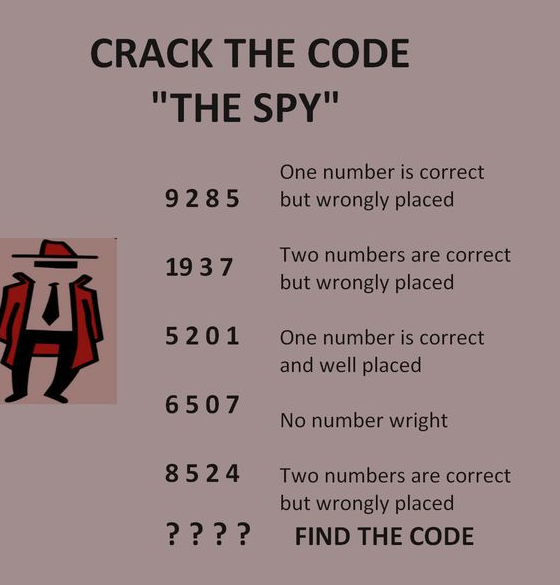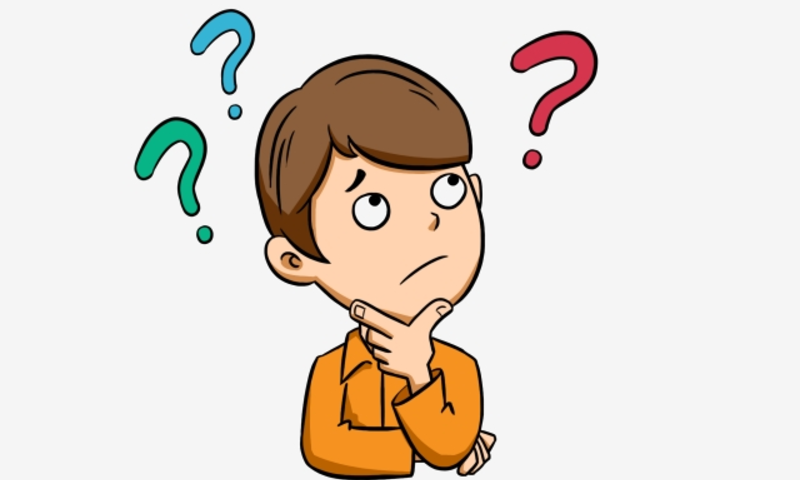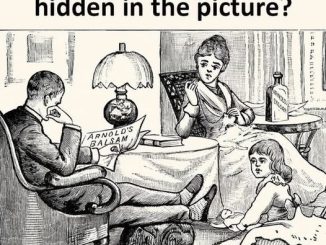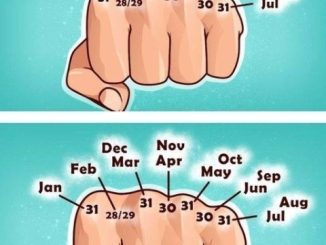The world of puzzles is a fascinating playground for the mind, offering a diverse range of challenges that test our cognitive abilities. Among these, logic puzzles stand out as captivating tests of our reasoning skills, demanding keen observation, deductive thinking, and a knack for spotting patterns.
One such puzzle, often called “Crack the Code” or “The Spy,” has become a favorite among puzzle enthusiasts, captivating minds with its intricate clues and rewarding sense of accomplishment.

Imagine yourself as a secret agent, tasked with deciphering a coded message to prevent a global catastrophe. This is the essence of the “Crack the Code” puzzle. You are presented with a series of numbers, each accompanied by a clue that hints at the correct four-digit code. Your mission, should you choose to accept it, is to use your deductive reasoning skills to unlock the secrets within.
Let’s dive into the heart of the puzzle. You’re presented with a set of clues, each revealing a piece of the puzzle:
- Clue 1: 9285: One number is correct but wrongly placed.
- Clue 2: 1937: Two numbers are correct but wrongly placed.
- Clue 3: 5201: One number is correct and well placed.
- Clue 4: 6507: No number is correct.
- Clue 5: 8524: Two numbers are correct but wrongly placed.
Your goal is to use these clues to determine the correct four-digit code. It’s a thrilling test of logic, a mental puzzle that requires careful analysis and a keen eye for detail.
Let’s break down the puzzle step by step, using logic and deduction to crack the code:
1. Analyzing Clue 4 (6507):
Clue 4 tells us that none of the digits in 6507 are part of the correct code. This means we can eliminate 6, 5, 0, and 7 as possibilities.
2. Analyzing Clue 3 (5201):

Since we know 5 and 0 are incorrect (from clue 4), either 2 or 1 must be the correct digit and in the correct position. Clue 3 states that one number is correct and well placed, so 2 must be the correct digit and occupies the third position in the code.
3. Analyzing Clue 1 (9285):
We know 5 is incorrect (from clue 4). This means either 9, 2, or 8 is correct but in the wrong position. Since 2 is already in the third position (from clue 3), it can’t be correct in the second position here. Therefore, either 9 or 8 is the correct digit, but in the wrong place.
4. Analyzing Clue 5 (8524):
We’ve already ruled out 5. And we know 2 is in the third position. This means 8 and 4 must be the correct digits, but in the wrong positions.
5. Analyzing Clue 2 (1937):

We know 1 could be a correct digit from clue 3. Since 9 and 3 are also candidates for correct digits but wrongly placed, 1 is likely the correct digit and occupies the first position in the code.
Based on our analysis, we can deduce the following:
- 1 is in the first position (from clue 2).
- 2 is in the third position (from clue 3).
- 8 must be in the second position (from clue 5).
- 4 must be in the fourth position (from clue 5).
Therefore, the correct code is 1824.
The moment you crack the code, you experience a surge of satisfaction, a sense of accomplishment that comes from conquering a mental challenge. It’s like solving a complex puzzle, piecing together the fragments of information to reveal the hidden truth. The “Crack the Code” puzzle is a testament to the power of logic and the joy of unraveling mysteries.
This puzzle is more than just a fun diversion. It’s a valuable tool for sharpening your critical thinking skills, enhancing your ability to analyze information, and developing your problem-solving abilities. By engaging in logic puzzles like “Crack the Code,” you train your mind to think strategically, identify patterns, and make logical deductions, skills that are valuable in all aspects of life.
The “Crack the Code” puzzle, often called “The Spy,” is a delightful challenge that tests your deductive reasoning and problem-solving skills. By carefully analyzing each clue and eliminating possibilities, you can unlock the hidden code. The next time you encounter a puzzle like this, remember the steps, and you’ll be cracking codes like a master spy in no time! So, embrace the challenge, sharpen your mind, and enjoy the rewarding experience of solving logic puzzles.


